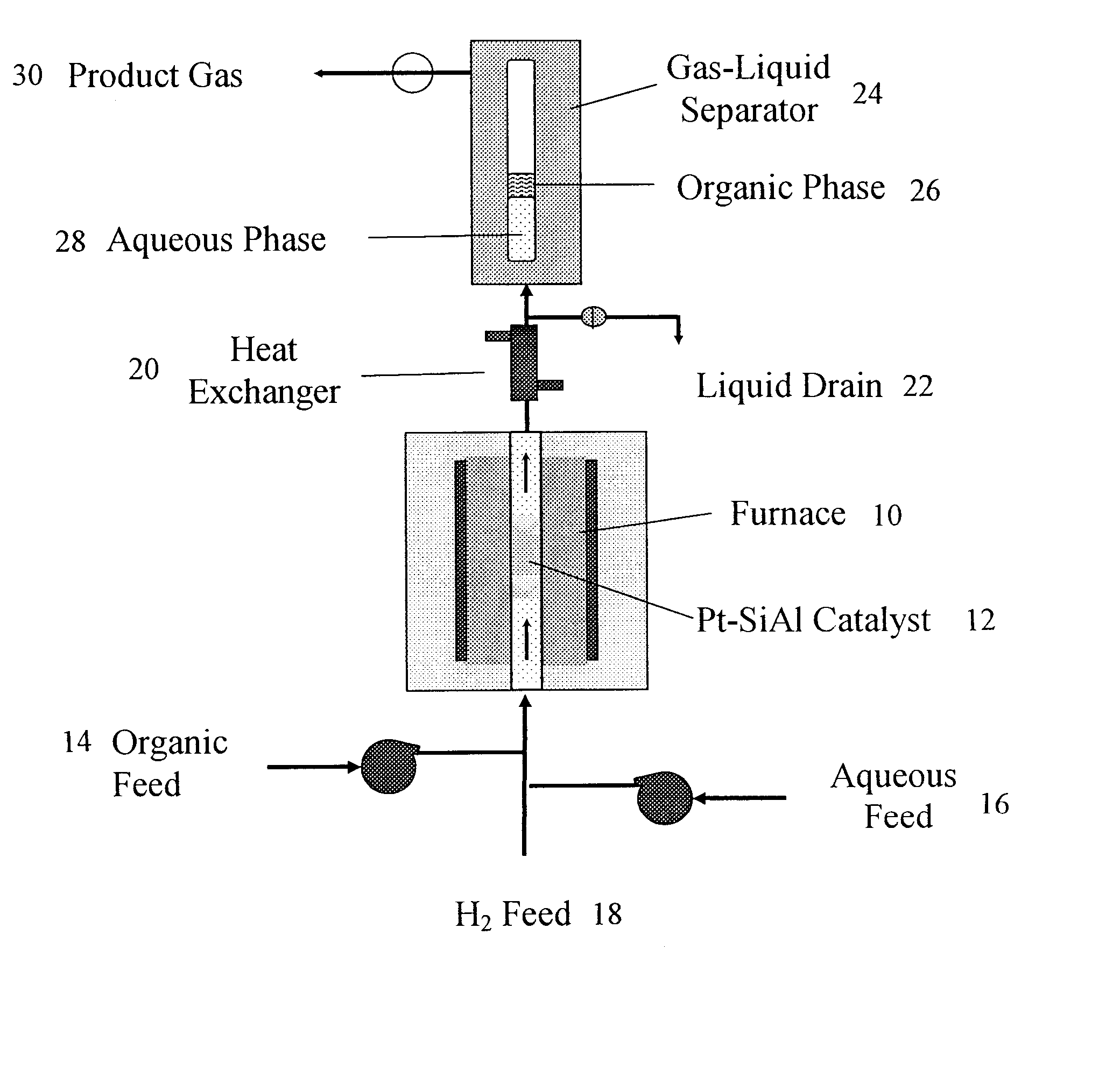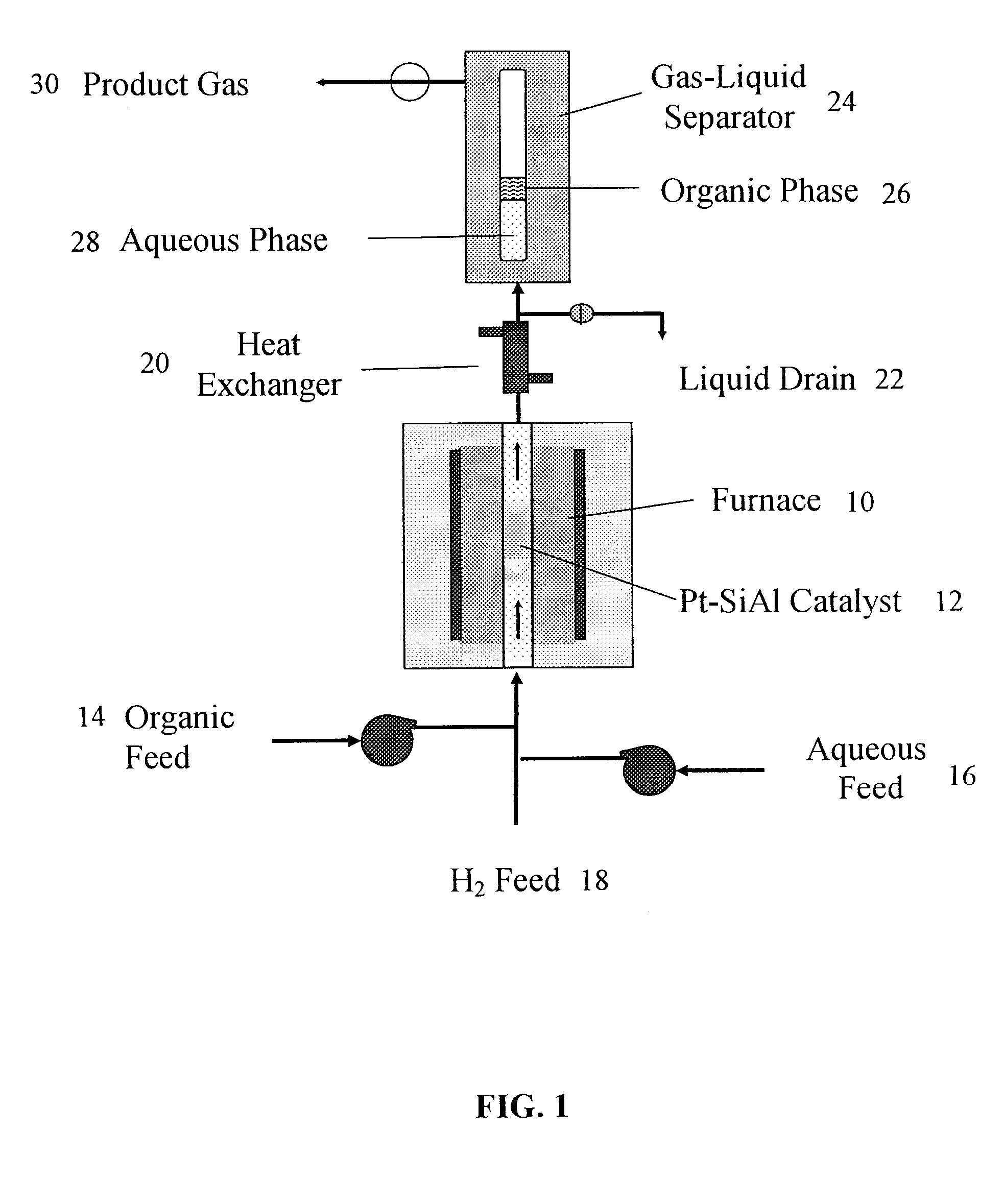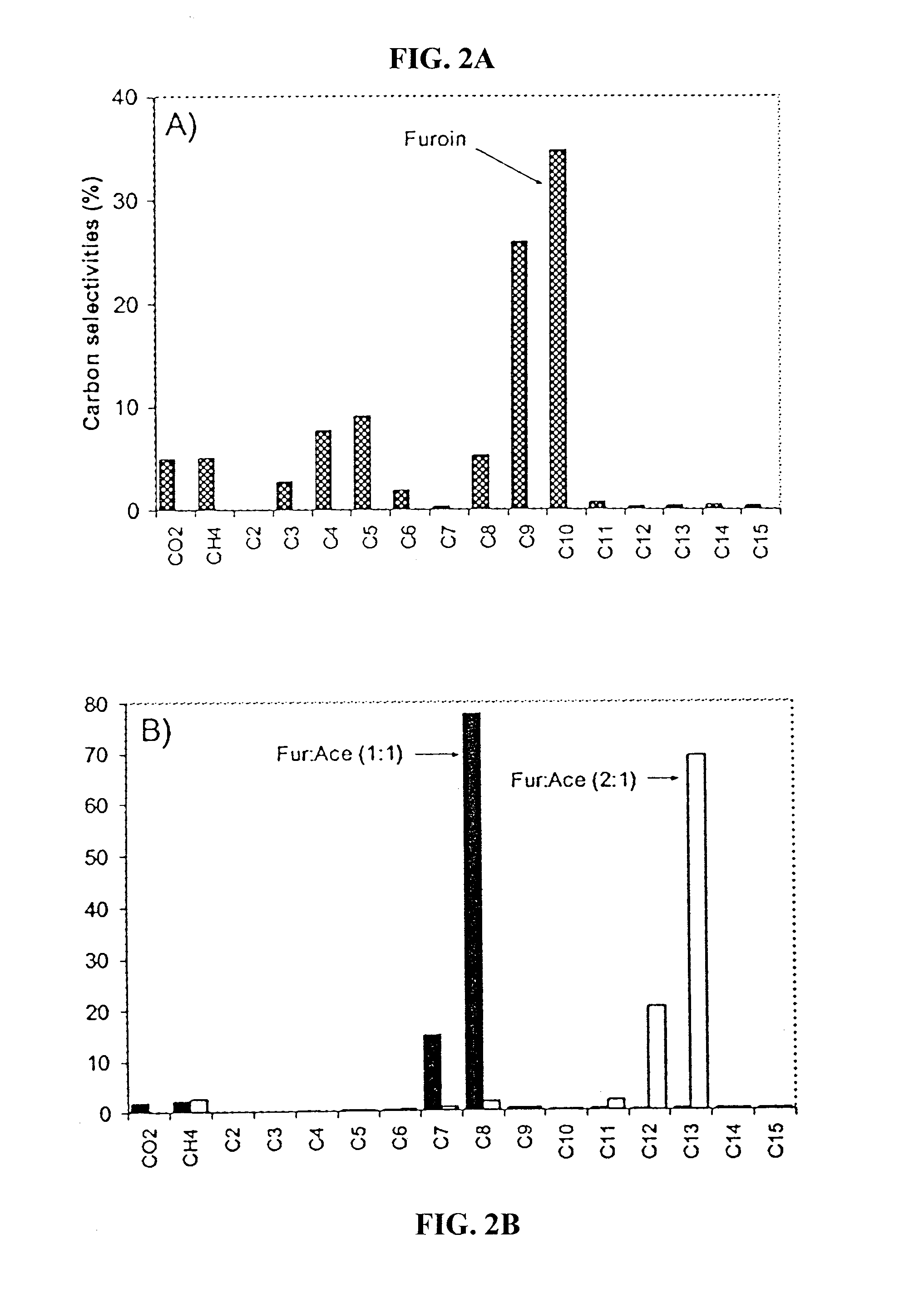Stable, aqueous-phase, basic catalytsts and reactions catalyzed thereby
a catalyst and basic technology, applied in the field of catalysts, can solve the problem of low value as a fuel additiv
- Summary
- Abstract
- Description
- Claims
- Application Information
AI Technical Summary
Benefits of technology
Problems solved by technology
Method used
Image
Examples
examples
[0079] Catalyst Preparation and Characterization: Supported Pd and Pt catalysts were prepared by incipient wetness impregnation of Al2O3 (“Catapal B”-brand, Sasol, Houston, Tex.) and SiO2—Al2O3 (MS-25-brand, Al2O3 content 25 wt %, Grace Davison, Columbia, Md.), using tetra-amine platinum (IV) nitrate (Strem Chemicals, Newburyport, Mass.) and tetra-amine palladium (II) nitrate (Strem Chemicals) as the precursor salts. Following impregnation, catalysts were dried in air at 393 K for 12 h and then calcined in a flowing 20% O2 / He gas mixture (GHSV ˜1000 h−1) to 533 K (at 1.3 K / min) and held at this temperature for 2 h. Prior to collecting reaction kinetics data and CO chemisorption measurements, each catalyst was reduced in flowing H2 (GHSV ˜250-1000 h−1) at a temperature of 723 K for Pt / SiO2—Al2O3, and at a temperature of 533 K for the Pd / Al2O3 and Pt / Al2O3 catalysts. The temperature was ramped from room temperature to the desired reduction temperature over a period of 8 h and held at ...
PUM
| Property | Measurement | Unit |
|---|---|---|
| mass ratio | aaaaa | aaaaa |
| wt % | aaaaa | aaaaa |
| mass ratio | aaaaa | aaaaa |
Abstract
Description
Claims
Application Information
 Login to View More
Login to View More - R&D
- Intellectual Property
- Life Sciences
- Materials
- Tech Scout
- Unparalleled Data Quality
- Higher Quality Content
- 60% Fewer Hallucinations
Browse by: Latest US Patents, China's latest patents, Technical Efficacy Thesaurus, Application Domain, Technology Topic, Popular Technical Reports.
© 2025 PatSnap. All rights reserved.Legal|Privacy policy|Modern Slavery Act Transparency Statement|Sitemap|About US| Contact US: help@patsnap.com



